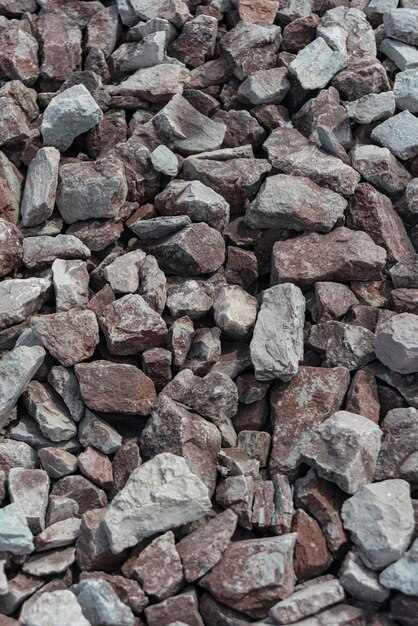
When planning a construction or renovation project, selecting the right materials is crucial. One popular choice for many projects is basalt stone. Known for its durability and aesthetic appeal, basalt stone is a versatile material that can enhance the look and functionality of various spaces. This guide will help you understand how to choose the right basalt stone for your project from a reliable basalt stone exporter from India.
Understanding Basalt Stone
Igneous rock known as basalt stone is created when lava near the Earth’s surface cools quickly. Its texture is finely grained and its color ranges from dark gray to black. It is composed of minerals, such as plagioclase, olivine, and pyroxene. Because of the way it forms, basalt stone is robust and solid, which makes it a great material for building and designing.
Assessing Your Project Needs
Consider the requirements of your project before choosing basalt stone. Ascertain the stone’s function in your project. Is it going to be used for wall cladding, worktops, flooring, or outdoor landscaping? Some applications might call for a particular kind of polish on the basalt stone. Selecting the appropriate stone will be made easier if you are aware of the requirements for your project.
Evaluating Basalt Stone Types
Basalt stone comes in various types, each suited for different applications. Some common types include:
- Crushed Basalt: Ideal for road base, construction fill, and landscaping.
- Basalt Pavers: Used for patios, pathways, and driveways.
- Basalt Tiles: Perfect for indoor flooring and wall cladding.
- Basalt Columns: Suitable for decorative elements in landscaping.
Evaluate the specific needs of your project to determine which type of basalt stone is most appropriate.
Considering Stone Finish
Both the appearance and utility of basalt stone are influenced by its finish. Typical finishes consist of:
- Polished: lustrous and silky, ideal for interior uses such as tiling and countertops.
- Honed: Matte finish, ideal for flooring and wall cladding.
- Natural Split: Rough texture, great for outdoor paving and landscaping.
- Sandblasted: Textured surface, often used for decorative purposes.
Choose a finish that complements your design aesthetic and meets the practical requirements of your project.
Checking Quality and Durability
When choosing basalt stone, quality is an important consideration. A high-quality basalt should be smooth, compact, and devoid of flaws or fissures. For outdoor applications or high-traffic locations, durability is extremely crucial. Make sure the stone is of the best quality for your project by closely inspecting it or by speaking with a reliable provider.
Budget Considerations
The kind and quantity of basalt stone you can buy will depend on your budget. Although basalt stone is usually reasonably priced, the type, grade, and finish might affect the price. To compare costs, get quotations from several providers. When creating your budget, don’t forget to account for installation and maintenance costs.
Sourcing Basalt Stone
The cost and general quality of your basalt stone might be affected by where you get it. Seek out vendors who have a solid track record and glowing testimonials. Local vendors could provide speedier delivery times and more affordable costs. Make sure the provider offers comprehensive details regarding the quality, origin, and characteristics of the stone.
Environmental Impact
Your decision should consider the environment. Because basalt stone is a natural resource, it may be obtained responsibly. Processing and shipping, however, may have an impact on its environmental imprint. Select vendors who place a high priority on sustainable methods. If available, look for certifications or environmentally responsible choices.
Installation and Maintenance
Basalt stone has to be installed and maintained properly to last a long time. Make sure that the installers you choose have experience. As for cleaning and sealing the stone, adhere to the manufacturer’s instructions. Frequent upkeep will preserve the best possible appearance and guard against damage over time for the basalt stone.
Aesthetic Appeal
Any place can look more visually appealing with basalt stone. Its natural texture and deep, rich hue give both interiors and exteriors a refined touch. Think about how the stone will look in your entire design. Use it to give your project focal points or subdued accents.
Practical Tips for Choosing Basalt Stone
- Visit Showrooms: Getting a firsthand look at the stone will aid in your decision-making.
- Request Samples: Examine small samples to see how they function and look in your project space.
- Consult Experts: Ask contractors, architects, or designers who have worked with basalt stone for guidance.
- Examine Long-Term Use: Take into account the stone’s performance and aging over time.
Selecting the best basalt stone for your project requires giving serious thought to several aspects. Every step is critical, from comprehending the many types and finishes to assessing quality and cost. You can choose basalt stone that not only fits the requirements of your project but also improves its appearance and usefulness by adhering to these recommendations. Basalt stone is a dependable and eye-catching option that can improve the overall aesthetic of your area, whether it is used indoors or out.